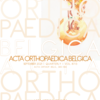Ultra-short cementless anatomical stem for intracapsular femoral neck fractures in patients younger than 60 years
total hip arthroplasty; femoral neck fracture; ultra-short anatomical cementless stem
Published online: Feb 16 2022
Abstract
The aim of this study was to present the midterm results of total hip arthroplasty with ultra-short anatomical cementless stem in the primary treatment of displaced intracapsular femoral neck fractures in patients younger 60 years.
From 2006 to 2015, 17 hip arthroplasties (with the Proxima stem) were performed in group of 17 patients for the treatment of acute femoral neck fractures Garden type III and IV. The mean follow-up period was 112.7 (range: 64-148) months. Patients were evaluated retrospectively - clinically and radiographically, using the Harris hip scoring system during the year 2020. Seven males and ten females (mean age: 45.0 years) were included in the study. Each of them had one or more risk factors (time delay, comminution of the femoral neck, corticosteroids usage, the presence of coxarthrosis, rheumatoid arthritis, alcohol abuse, etc…), because of which the osteosynthesis was not performed. Harris hip scores were 6.3 preoperatively and 82.9 at the final follow-up.
Three patients (17.6%) had complications: luxation, aseptic stem loosening (migration with subsidence - “varisation” and thigh pain) and deep infection. One patient (5.9%) with infection was revised.
In carefully selected younger patients with displaced intracapsular femoral neck fracture, where the osteosynthesis as first treatment option should be associated with high risk of complication (avascular femoral head necrosis, non-union) due to the presence of risk factors, the primary total hip arthroplasty could be performed. The ultra-short cementless stem offers promising results in these rare cases in the midterm.
